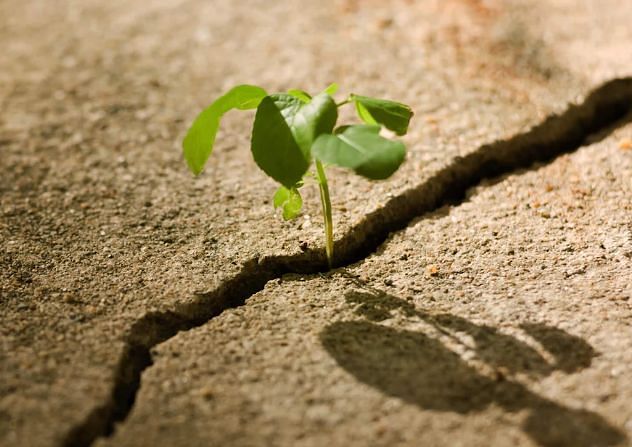An interesting piece titled ‘The Profound Emptiness of Resilience’ was carried in the New York Times Magazine wherein the author begins with the example of ‘Phoenix’, the mythological bird that rises out of its own ashes and into the sun.
This ‘rising from ruins’ is what resilience is commonly thought about. It is believed that people have the capacity to bounce back after going through adversity.
From personal trauma to natural calamities and ailments, they stand tall after a storm. They emerge strong after they are hit hardest. They succeed with one more blow. Vagaries after vagaries.
They face the fury and come out un-frazzled. The damage of hardship does not deform their willpower.
They run into an adversity in its various guises but float up the impact. They treat the wounds but survive with the scars.
Resilience is becoming all the more an important perspective given the fact that today’s life has got estranged from the absurdities of its times—Ineffective institutions; pseudo-intellectuality; feeble role models; flimsy relationships; perverted revolutions; phony leadership; bogus harangues; sham religiosity; hollow sermons; and mock social and sincere rectitude.
These are the times when slight is left to live and mull over; when scrap is left to cherish and value; and speck is left to kindle and inspire. The idea of resilience is turning intricate as the milieu around is draped in distorted obscurity.
In fact, antithesis establishes the canon governing our world. At times, it looks as if there is a contradiction existing everywhere. The world itself seems to have multiple characters. It contains multitudes. And, so do the human beings!
Amidst such dynamics of human life in a temporal world, the moot point remains as to what response actually qualifies to be ‘resilient’ in its character.
And more importantly, what type of ‘education’ can elicit the response called resilience? It will not happen with the help of “education” we claim to possess. Real education starts when a real-life scenario is confronted, and all the dogmas and doctrines parroted receive a dressing down. And life experiences become lifelong learnings.
It can’t also happen where thinkers, policy-makers and initiators are nihilistic. Where obstructionists, conspirators and nuisances surpass doers. The place, which has become a safe haven for all types of adversities to breed, bouncing back is somewhat difficult.
Resilience cannot thrive in a system infested with some rotten elements and tailored to promote pessimism and parody. For if it happens, people will garner the potential to become the orchestrators of their own fates.
And it is something which does not suit a particular section of people in any society.
Moreover, resilience cannot be viewed as an individual effort. It cannot be rooted in a tenacity of spirit alone. It is essentially connected with many other cords of society.
In a society where annihilation is glorified and resilience is projected as revenge, it brings in more doom. ‘Starting over again’ gets misconstrued as rebounding violently and venomously.
Resilience, on the contrary, is expanding as a pragmatic concept. The United States Agency for International Development has an explicit “Resilience Agenda”; the Department of Homeland Security lists two of its core goals as enhancing “the security and resilience of the nation’s critical infrastructure”.
The word has started swallowing up creakier competitors in jargon’s version of the survival of the fittest, supplanting “security” and ‘‘sustainability” (The New York Times Magazine).
Resilience, as such, is to be fathomed as recovery. The one that is devoid of rancour, revenge and resentment. No acrimony; no antagonism. It has to be framed in a way that generates positive energy, sustainable optimism, and intellectual development of people without pointing towards any sort of so-called ‘reconciliation’.
Of course, resilience begins with tragedy and pain. But it also has the power to end up with the most creative use of suffering without entailing further damage to oneself and others.
Easier said than done, it requires lot of staying power and serenity. It comes with the acceptance of human vulnerability and a spirit to stand strong for oneself and others in the hour of woe.
It saps the soul lest you crumble down. Reminds of Mirza Ghalib’s sense of painful perseverance that he owned so gracefully—
Ragoon Main Daudtay Phirnay Kay Hum Nahin Qaail
Jab Aankh He Say Na Tapka Tow Phir Lahoo Kya Hai…..
(The blood flowing in our veins indicates that we exist, but does not mean that we are alive. Being alive means being aware of pain. The desire to alleviate this pain should be intense enough to make one shed tears of blood).
Disclaimer: The views and opinions expressed in this article are the personal opinions of the author.
The facts, analysis, assumptions and perspective appearing in the article do not reflect the views of GK







